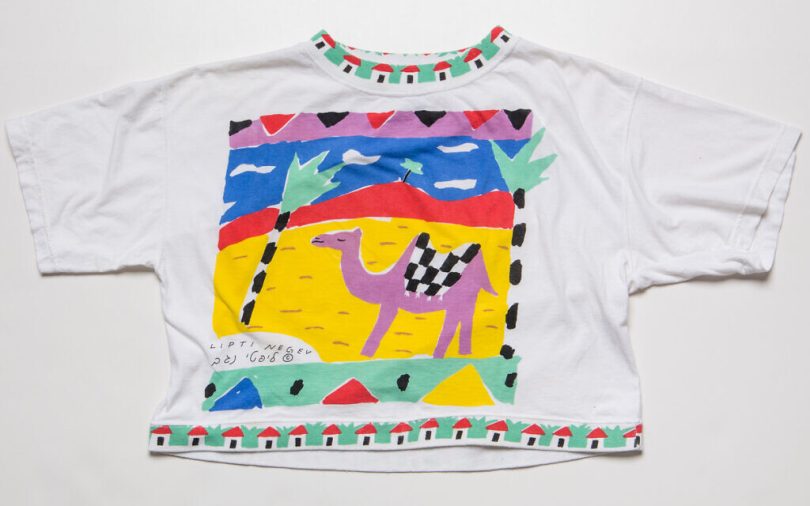[ad_1]
When Canadian-Israeli textile artist Ruth Adler created her quirky, colorful Lipti Art to Wear T-shirts in the late 1980s, she rapidly expanded an Israeli market that until then was limited to cotton tees emblazoned with Drink Coca-Cola and Hard Rock Café slogans.
“The storekeepers said, ‘There’s Hebrew on these, no one wants Hebrew on T-shirts,’” said Adler. “The next day they called and said, ‘Bring more.’”
It was an auspicious start for the white cotton tees and posters printed with Adler’s vibrant illustrations, which expanded globally to designs for graphic arts dealer Marci Lipman of Toronto as well as textiles for Italian office furniture company Martex and Macy’s. The business came to a natural end about a decade later, when Adler began splitting her time between Israel and North America for personal reasons.
Textiles have remained a constant in her artistic life, and now Adler’s more recent tapestries, along with a glass display case of carefully preserved Lipti tees, are on show in curator Dalia Manor’s “Through the Fabric” exhibit at Holon’s Institute of Technology gallery through February 16, 2023.
The exhibit takes visitors through Adler’s artistic life of the present, and offers a brief look at her Lipti past.
Adler arrived in Israel in 1975 from Edmonton, Alberta, as a high school graduate planning to study science. When her Israeli boyfriend’s mother noted her penchant for drawing all the time, Adler found her way to the textile design program at Shenkar College of Engineering and Design.
“I was inspired by Matisse,” she said, and indeed, one can sense, in Adler’s present and past works, the spirit of the French artist who was known for his use of color and shape.
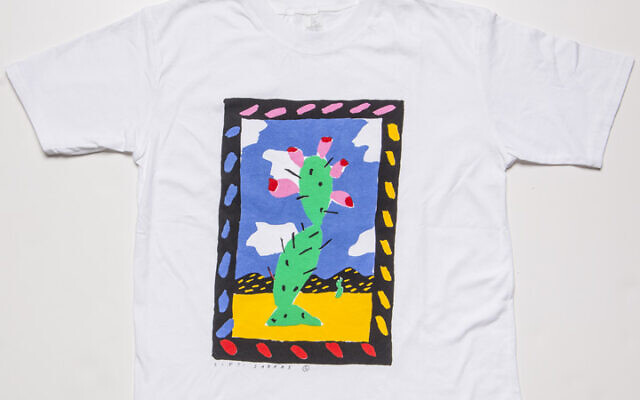
A Lipti T-shirt by Ruth Adler from 1987 featuring the Negev, part of the exhibit at Holon Institute of Technology through February 2023 (Courtesy Jessie Millens)
Adler created her first T-shirt during her final year when one of her Shenkar professors suggested drawing small images and blowing them up, magnifying their imperfections, and mimicking the natural flaws and quirks of a painting.
She began drawing images of the world around her — the streets of Tel Aviv, its beaches and palm trees, tiny side streets and small apartment buildings.
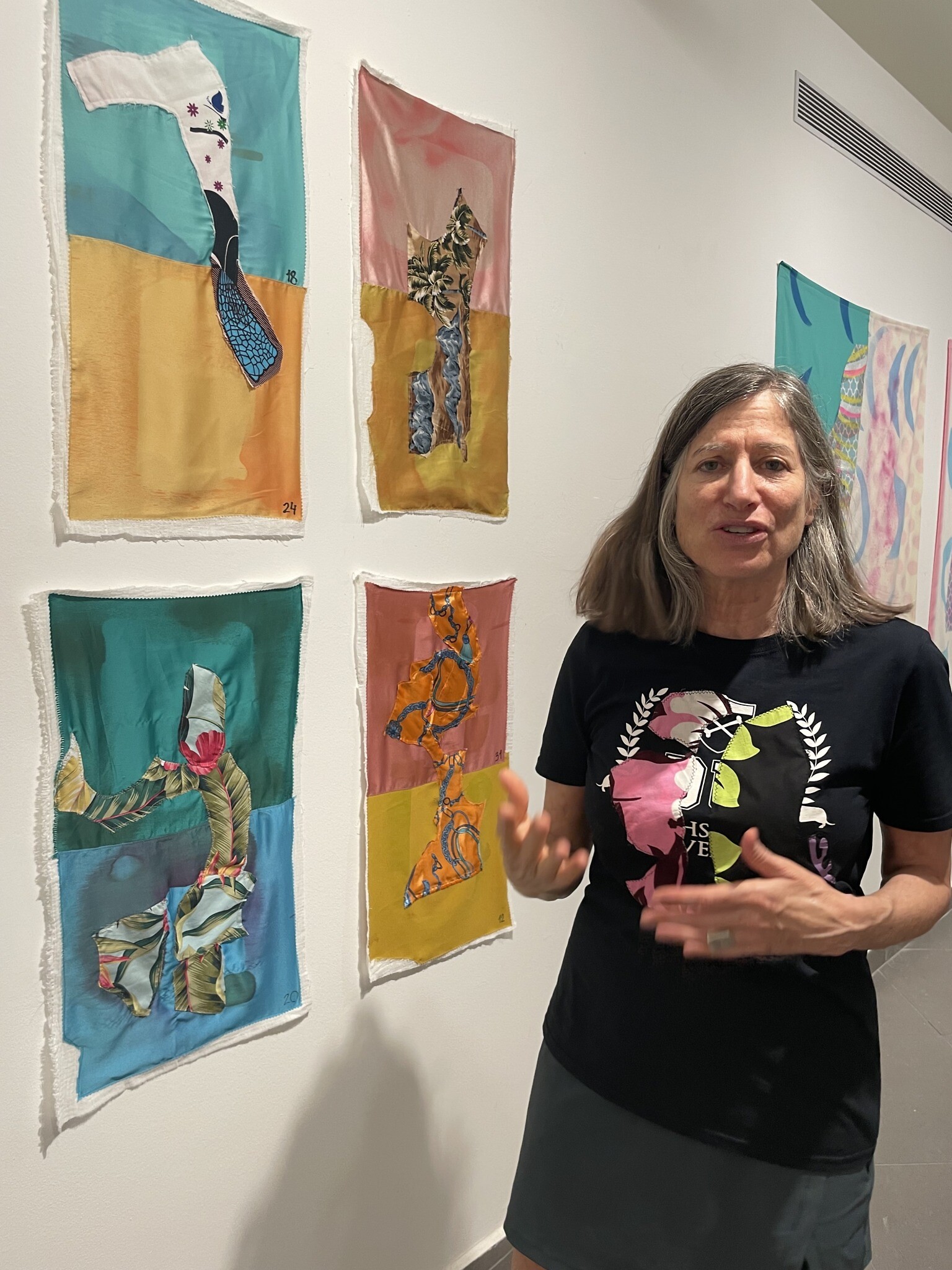
Textile artist Ruth Adler and one of her works shown in a new exhibit at Holon Institute of Technology through February 2023 (Jessica Steinberg/Times of Israel)
Adler drew the Sea of Galilee from weekend trips up north, the cranes at the port of Haifa, the domed roofs of Jerusalem. She offered an original perspective on Israel because it was new to her and she was living and seeing it through a fresh lens.
“I had hundreds of drawings,” said Adler, pointing to some examples in the glass vitrine in the center of the exhibit.
She and her then-husband printed 300 T-shirts and called them Lipti, his nickname for her, and then tried selling them in local stores.
They were turned away at first because Israelis only wanted shirts with words in English as a sign of their travels abroad. But Lipti caught on and “we rode the T-shirt wave,” said Adler.
When Adler returned to Canada, she tried creating a similar line of textiles based on Canadian images and culture, but “Canada isn’t a ‘yes’ nation’ like Israel,” she said, and she moved on to textiles and painting, realizing it felt right to combine the two in tapestries and on a far larger scale.
Adler later earned a masters in fine arts, exploring the use of paint and textiles, as well as what has become a recurring theme of digital circles on paper.
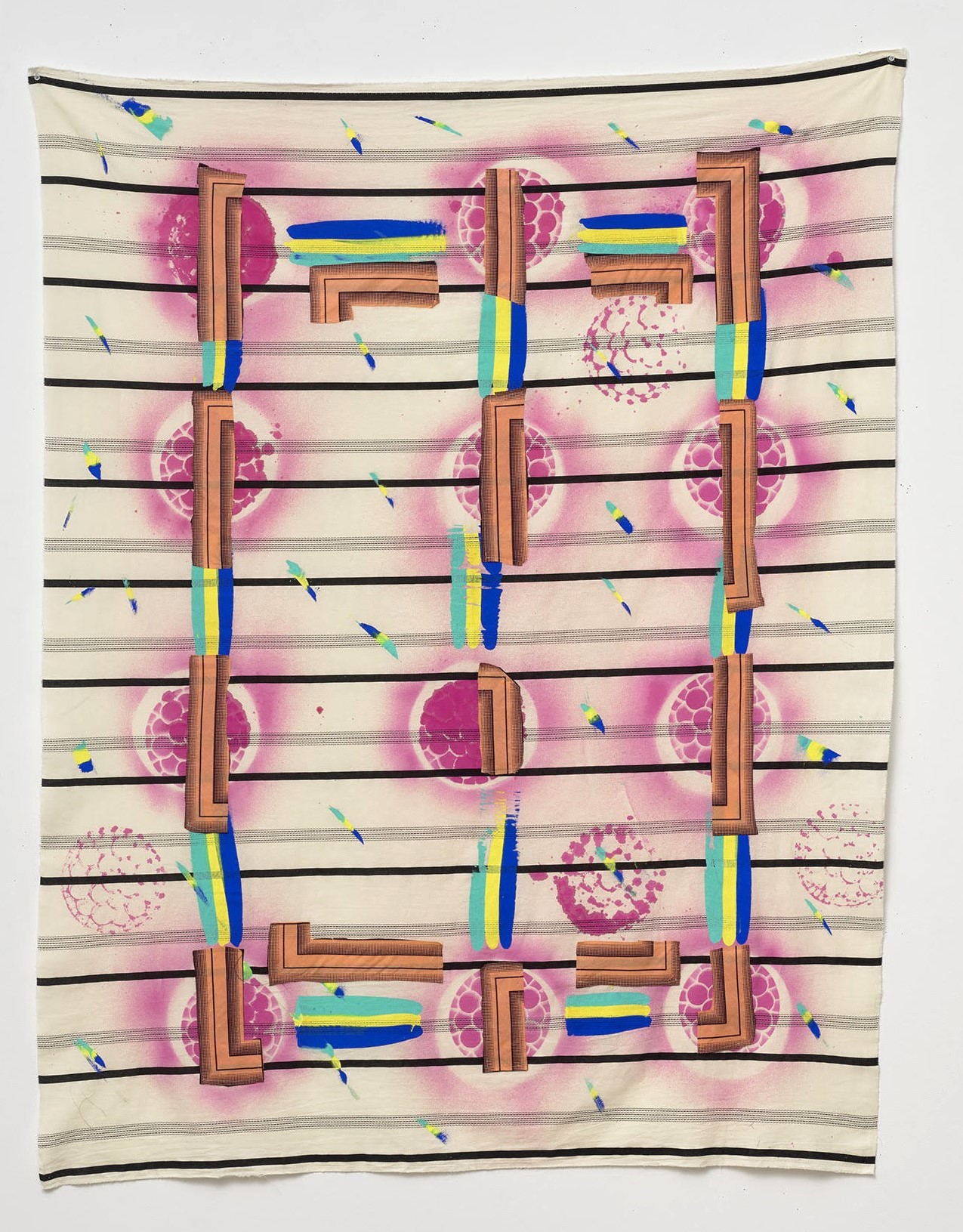
Textile artist Ruth Adler’s ‘In the Name of the Color Pink,’ acrylic, fabric and thread on cotton, shown in a new exhibit at Holon Institute of Technology through February 2023 (Courtesy)
She works with colors and fabrics that reflect the places where she currently spends her time, which include Hawaii, where her daughter lives; Tel Aviv, the home of her son and his family; and Toronto, where her husband lives full-time.
“The textiles are like paint and have so much information in them,” said Adler. “They’re also different in different places.”
Adler tends to carry a small parcel of textiles around with her, but also likes to purchase from her various locations, especially in Israel where she’s a longtime customer in the fabric stores of Tel Aviv’s Nachalat Binyamin neighborhood.
A triptych made in Hawaii while she awaiting the birth of her daughter’s first child, is bold and tropical, a vacation of color and sensations.
One piece in the exhibit, “Nachala Magic,” features delicate chiffons and shimmering satin, selected from a bag of eveningwear sample fabrics gifted to her by a Nachalat Binyamin shop owner.
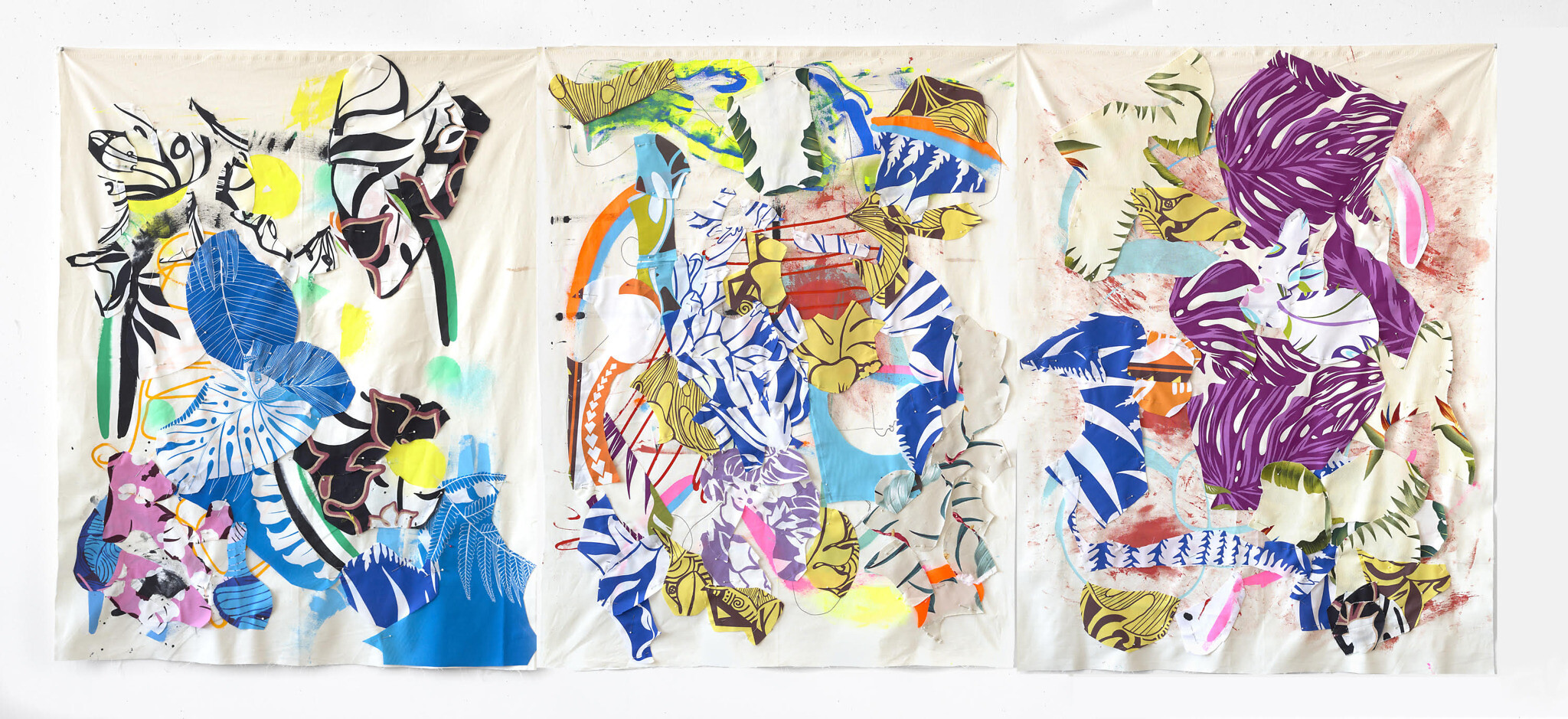
Ruth Adler’s ‘Story of a Birth in Hawaii’ 2018, acrylic, fabric, thread on muslin, on exhibit at Holon Institute of Technology through February 2023 (Courtesy Michael Cullen)
The theme of digital circles on paper is visible in many pieces, as well as stencils, often repurposed from items that Adler finds from her studios and locations.
“They reflect the places where I am,” said Adler.
The patterns and prints of the textiles help organize the color of the work, as seen in one piece focused by stripes of orange that represent Canada’s First Nations, while another feels distinctly local, with the red, black, white and green colors of the Palestinian flag and textiles in the shape of jets, a clear reference to conflict and war.
These days, Adler still gets asked about the Lipti T-shirts, usually receiving about one email a week from someone telling her how much they meant to them. One art student recently told her that she always asks in secondhand and vintage stores if they have any Lipti T-shirts.
(Adler often suggests the same to fans who write her on the Lipti Facebook page.)
A retrospective of the tees was held in 2014 at Shenkar College in Tel Aviv, along with a book published about the Lipti body of work.
It’s heartwarming and surprising to hear how much the shirts meant to people, said Adler.
“When I was doing the T-shirts, I was so busy doing them, and we made a nice living,” said Adler, never realizing at the time how deeply they resonated for their many fans.
The tees are also a reminder of her lifelong ties to Israel. Over time, she added other elements of life in Israel, from the Gulf War’s Scuds in 1991 to Arabic writing alongside Hebrew and English.
“Even though I also live in Toronto and Hawaii, this is who I am,” she said.
[ad_2]
Source link


